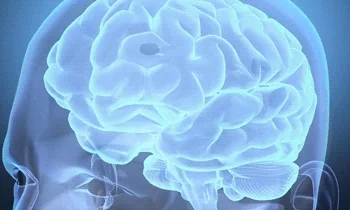
This logo isn't an ad or affiliate link. It's an organization that shares in our mission, and empowered the authors to share their insights in Byte form.
Rumie vets Bytes for compliance with our
Standards.
The organization is responsible for the completeness and reliability of the content.
Learn more
about how Rumie works with partners.
Are you tired of the same old rote learning techniques in the classroom?

Picture a classroom where students aren't just sitting passively. Instead, they're constantly absorbing new information through exciting and engaging hands-on learning experiences.
 Photo by MI PHAM on Unsplash
Photo by MI PHAM on UnsplashIncidental learning has the potential to transform the way we approach teaching and learning in the classroom, with benefits such as:
Increased engagement
Improved retention
Increased motivation
What is Incidental Learning?

While playing adventure games, you might inadvertently learn how to read a map as you had fun exploring different virtual worlds.
You might enjoy watching culinary shows, such as Master Chef, and unintentionally learn about different cultures and customs as the chefs explore different types of cuisines from around the world.
As you spend time with someone from a younger generation, such as a nephew or niece, you might learn new slang words.
1. Increased Engagement
Incidental learning can increase engagement among students by providing an element of surprise and novelty.

Unexpected information or events increase attention, which results in more buy-in.
Students are more likely to think critically and engage in more complex mental processing to understand the material.
It involves making connections between new information and existing knowledge, which also leads to deeper learning.
 A psychology professor lectures on memory and the brain. The professor shows a video of someone trying to remember a list of items by associating those items with different areas in their house.
A psychology professor lectures on memory and the brain. The professor shows a video of someone trying to remember a list of items by associating those items with different areas in their house.
The professor follows up with a surprising fact: that people forget "50% of all new information within a day...and 90% of all new information within a week."
Quiz
Ms. Mozaria wants to increase her students' engagement in math class. She decides to incorporate incidental learning. Which of the following activities would be the best way to increase engagement through incidental learning?
By providing real-world examples of math concepts, students can see the relevance and practical applications of what they're learning. This can make the learning experience more meaningful, connect to existing knowledge, and increase engagement and motivation to learn.
2. Improved Retention
Incidental learning can improve retention by creating a more memorable learning experience.
Engages multiple areas in the brain.
Facilitates the connections made in learning from one context to another.
Promotes long-term recall through a vivid memory.
 An economics professor uses the Beanie Baby craze — a time when the popularity of Beanie Babies drove people to pay absurdly high prices for them — to teach students the concept of supply and demand.
An economics professor uses the Beanie Baby craze — a time when the popularity of Beanie Babies drove people to pay absurdly high prices for them — to teach students the concept of supply and demand.
3. Increased Motivation
Incidental learning can also increase motivation. When students encounter unexpected information, they're more likely to feel a sense of wonder and a desire to learn more.

Creates a sense of excitement and curiosity.
Encourages students to think creatively to reach solutions.
Fosters a sense of personal ownership over their learning.
 To engage students in a discussion on what statistics do and don't show, a statistics professor might begin the lesson with a surprising statistic, such as "1 in 5 Americans admits to peeing in the pool."
To engage students in a discussion on what statistics do and don't show, a statistics professor might begin the lesson with a surprising statistic, such as "1 in 5 Americans admits to peeing in the pool."
Take Action
Ready to take learning to the next level?
Use incidental learning in your classroom for a more effective, efficient, and enjoyable teaching and learning experience with your students.

This Byte has been authored by
Daniel Pun
Educator

